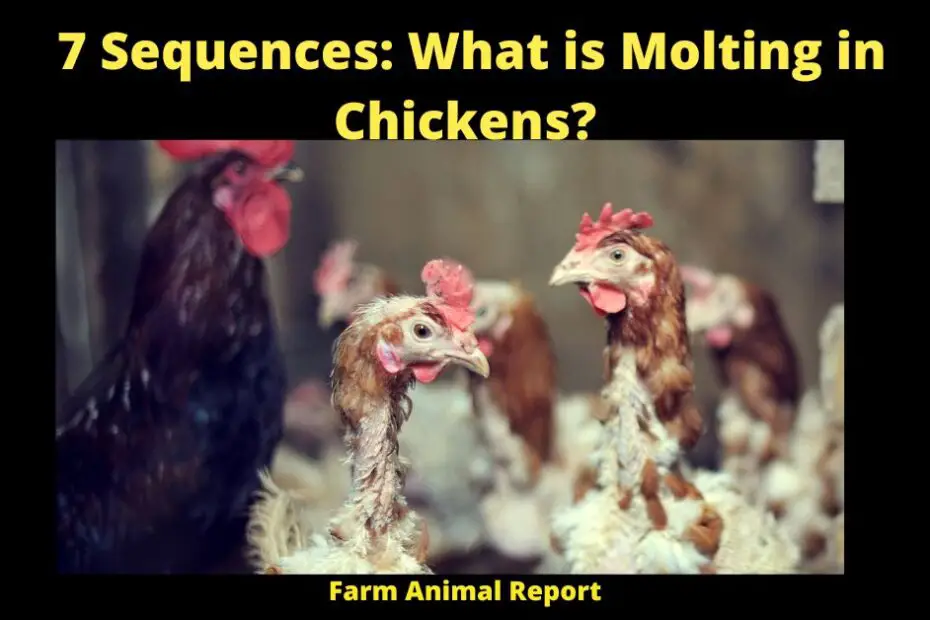Do you know what molting is? If you’re like most people, you probably have no idea. Molting is the process that chickens go through when they lose their feathers and grow new ones. It’s a natural process that all chickens go through, and it’s an important part of their growth and development. In this blog post, we will discuss the molting process in detail and answer some common questions about it. We’ll also take a look at the surprising truth about molting that most people don’t know!
What is Molting in Chickens
Is the periodic Shedding and Renewal of Feathers. Chickens molt at one-year intervals, usually 14 -16 weeks in the late fall or Early Fall. During shorter days Egg Production slows, and eggs become smaller. It is a Feather Regeneration Process, so chickens are never naked.
Chickens go through a process called molting (feather loss) at least once a year. This is when they lose their pin feathers and grow new ones. It usually lasts about six weeks. molting can be brought on by a number of things, including a change in the amount of daylight, stress, or an illness. So what is molting in chickens?
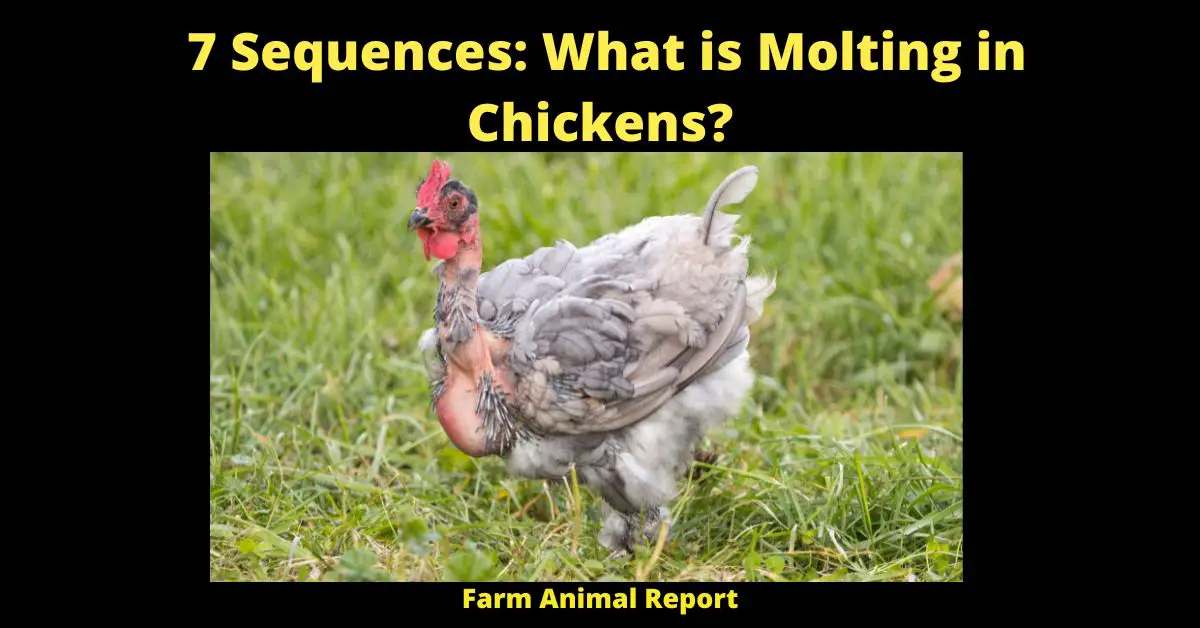
During this time, chickens will stop laying eggs and may even stop eating altogether. While molting may be a necessary process, it can be detrimental to your flock if not managed properly. Here are a few tips for helping your chickens through molting season:
- Provide plenty of fresh water and scratch grains for them to peck at.
- Remove any sharp objects from the coop that they could hurt themselves on.
- Check for mites and other parasites that might take advantage of their vulnerable state.
- Make sure they have access to a dust bath so they can clean and preen their new feathers.
With a little care and attention, your chickens will make it through molting season just fine.
See Our Article – 5 Easy Checks: My Chickens Molting or Mites (Updated 2022)
What are the Stages of Molting?
The molting process is essential for chickens to maintain their health and produce eggs. There are four distinct stages of molting (annual molt) :
- Pre-molting,
- Full-blown molting,
- Recovery,
- Post-molt.
- During the pre-molting stage, chickens will stop producing eggs and begin to eat more than usual as their body stores energy for the molt.
- Full-blown molting is when the chicken’s feathers start to fall out and new feathers begin to grow. This can take up to 6 weeks and during this time chickens are very vulnerable to predators.
- The recovery stage is when the new feathers have grown in and the chicken starts to return to its normal routine.
- During the post-molt stage, egg production will slowly resume as the chicken’s body readjusts to its new feather coat. Molting can be a stressful time for chickens but it is essential for their survival.
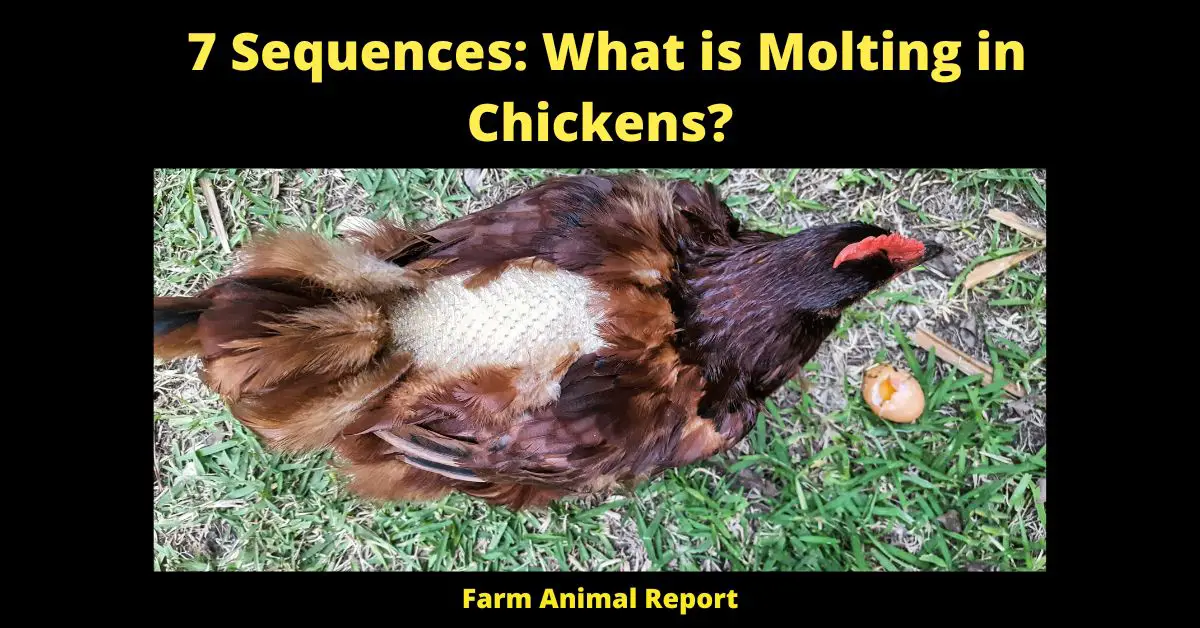
What is a Hard Molt?
A hard molt is when a chicken sheds all of its feathers at once and grows new feathers. This usually happens in response to a change in the environment, such as an increase in temperature or a decrease in daylight hours. molting can be a stressful process for chickens, and it can take several weeks for them to complete the molt and return to their normal feathering.
See Our article – 5 Triggers: At What Age do Chickens Stop Laying Eggs? Fun Facts About Hen Reproduction
During this time, chickens may stop laying eggs, and their plumage may appear patchy and uneven. molting is a natural process, and it is necessary for chickens to maintain their health and vigor. However, it is important to ensure that chickens have access to adequate food and water during this time, as they will need extra energy to grow new feathers.
What is a Soft Molt?
Chickens molt or shed their feathers, once a year in order to grow a new set of feathers. A molting chicken will usually stop laying eggs during this time, as the process of growing new feathers uses up a lot of energy. Molting can last anywhere from four to eight weeks.
A soft molting is when a chicken gradually loses its feathers over the course of several weeks. This is different from hard molting, which is when the chicken loses all its feathers at once. Chickens typically go through a soft molting the first time they molt.
After that, they usually have one or two hard molts during their lifetime. The type of molting can be determined by looking at the feather shafts; if they are ragged or frayed, it is a hard molt, but if they are smooth, it is a soft molt.
While molting is a natural process, it can be stressful for chickens. To help reduce stress, provide them with plenty of food and water and create a safe space where they can hide if necessary. With a little care, your chickens will get through their molt and come out looking better than ever!
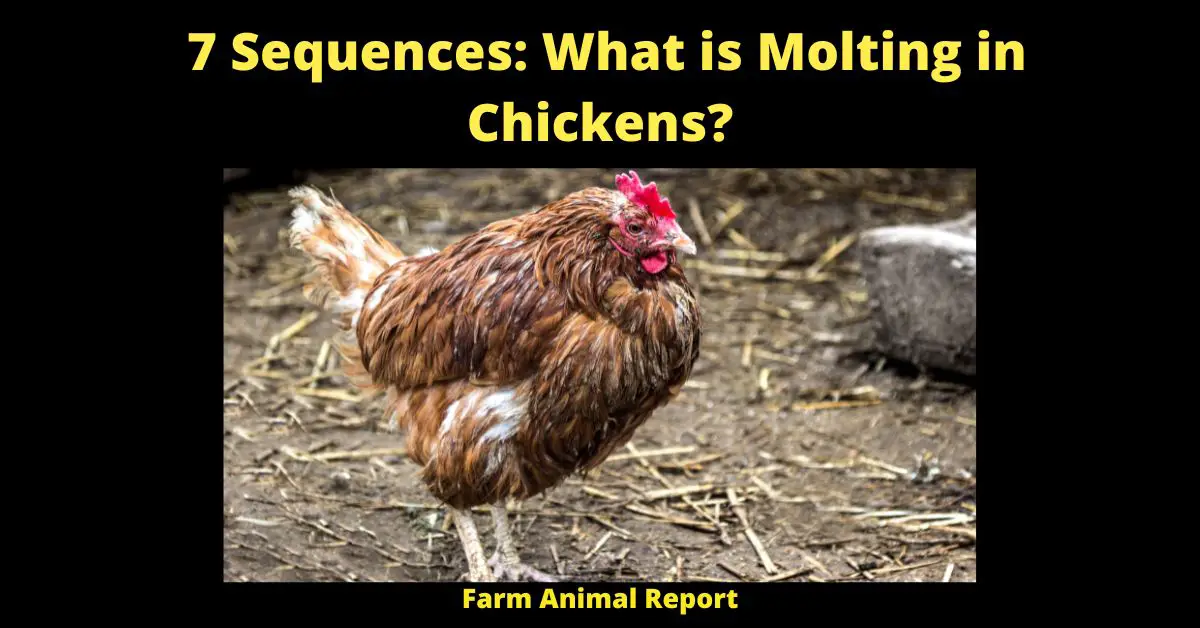
What is the Molting Sequence?
- Head
- Neck
- Back
- Breast
- Stern
- Thighs
- Wings
- Tail feathers
What is Chicken Molting Triggered By?
As any farmer knows, chicken molting is a process where chickens shed their feathers and grow new ones. While molting is a natural process that all chickens go through, there are a few things that can trigger it. One of the most common triggers is the changing of the seasons.
As the days get shorter and the weather gets cooler, chickens begin to molt in order to keep warm. Another common trigger is stress. If chickens are not getting enough food or water, or if they are being bullied by other chickens, they may start to molt as a way to cope with the stress. Molting can also be triggered by disease or injury.
If a chicken is sick or has been wounded, it may start to molt in order to recover. Ultimately, molting is a normal part of a chicken’s life cycle, but there are a few things that can trigger it.
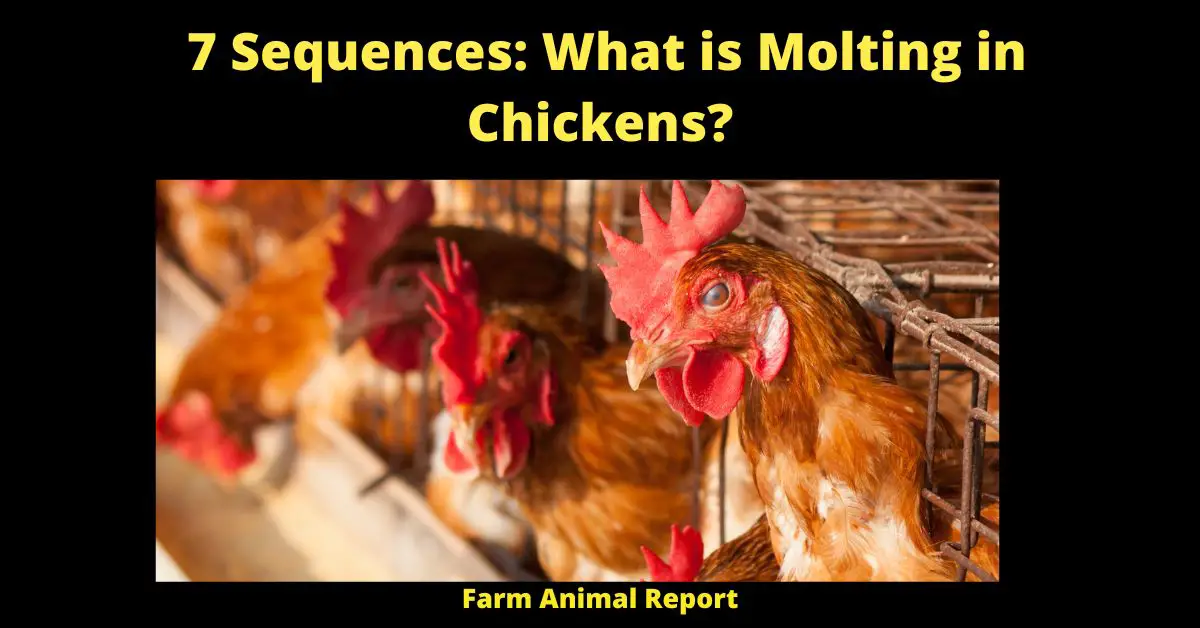
When Do Chickens First Molt for the First Time?
Chickens molt or shed their feathers, typically once a year. However, they may molt more frequently if they are not getting enough nutrients or if they are under stress. Molting is a natural process that helps chickens renew their feathers and stay healthy. Stress may Trigger new flock members into a molt.
It typically takes place over a period of several weeks, during which time chickens will gradually lose their old feathers and grow new ones. For most chickens, molting begins when they are around 18 months of age.
However, some breeds may not molt until they are two years old or older. Molting can be a difficult time for chickens, so it is important to make sure they have access to plenty of food and water during this period. Chickens typically molt in the fall, so the molting season is a good time to make sure your flock is getting all the nutrients they need to stay healthy and happy.
What is a Forced Chicken Molt?
Chickens typically molt or lose their feathers, once a year in the fall. This is a natural process that allows them to grow new feathers and stay warm throughout the winter months. However, some farmers choose to force their chickens to molt in the spring or summer.
This is done by withholding food and water for a period of time, which stresses the chickens and causes them to shed their feathers. While this may seem cruel, forced molting can actually be beneficial for both the chickens and the farmer.
Forcing chickens to molt outside of their natural cycle allows the farmer to control when they lay eggs. This can be helpful if the farmer wants to ensure that there is a consistent supply of eggs throughout the year. In addition, molting can help improve the quality of chicken meat.
The stress of molting causes the chicken to break down muscle tissue, which results in leaner, more flavorful meat. As a result, forced molting can be beneficial for both farmers and chickens.
Why are Chicken’s Eggs of a Better Quality After a Molt?
A chicken’s egg is of a better quality after a molt for a few reasons. First, during a molt, the chicken will generally stop laying eggs for a period of time. This gives the chicken’s body a chance to rest and recuperate, which can result in stronger and healthier eggs.
Additionally, molting provides an opportunity for the chicken to replace any damaged feathers, which can help to improve the quality of the eggs. Finally, during a molt, the chicken will typically consume more food in order to grow new feathers.
This extra nutrition can also lead to higher-quality eggs. In sum, there are a variety of reasons why chicken eggs are of better quality after a molt.
How Long Do Chickens Molt?
For new Chicken owners, Chickens molt or shed their feathers, once a year usually in the late summer or early fall. The entire process of molting can take 6-8 weeks. Backyard Chickens will stop laying eggs during this time as their bodies concentrate on growing new feathers.
Some chicken owners choose to increase the amount of protein in their chicken’s diet during the molting process to help them grow new feathers faster. Molting is a natural process that all chickens go through, and there is no need to be concerned if your chickens start to molt. Just make sure they have plenty of food and water and they will be back to their old selves in no time.
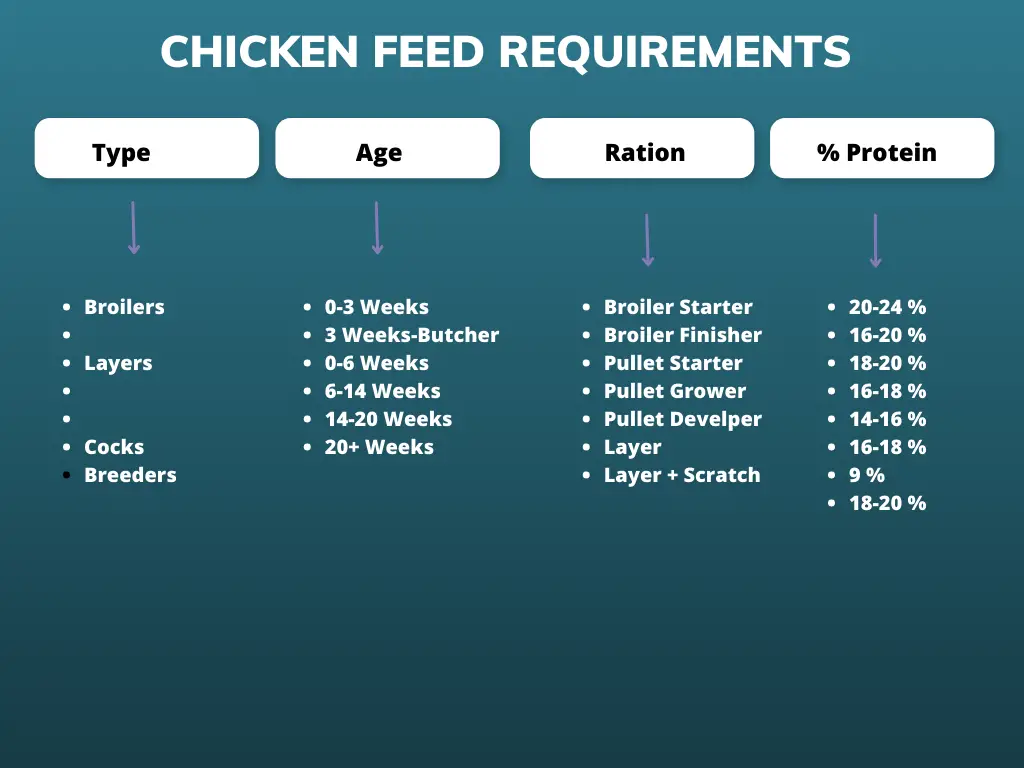
What are Feed adjustments needed for molting chicken’s diet?
A molting chicken needs extra protein intake in its diet to help it grow new feathers. You can achieve this by feeding the chicken a high-protein feed, or by adding a protein supplement to its normal feed. In addition, you will need to increase the amount of calcium in the diet during molting.
This can be done by feeding the chicken crushed oyster shells or another source of calcium. Finally, make sure that the chicken has access to plenty of fresh water. Molting can be a stressful time for chickens, and they will need extra hydration to stay healthy. This higher percent protein will help adult chickens and broody hens, in developing first feathers. Black oil sunflower seeds are very nutrious and help chickens develop the waxy coating that is on their feathers.
By making these simple adjustments to your chicken’s diet, you can help it through the molting process and ensure that it emerges with a beautiful new set of feathers. After Molting you can switch back to layer feed.
What are the Symptoms of Chickens Molting?
Chickens molt or shed their feathers, once a year in order to grow new ones. Molting is a gradual process that can last for several weeks, and during this time chickens may experience a number of different symptoms.
- Loss of Appetite – One of the most common symptoms is a loss of appetite, as the body redirects energy away from non-essential functions like feather growth.
- Lethargic – Chickens may also appear lethargic and less active during molting, and their combs and wattles may become pale or even lose color altogether.
- Stop Laying – In some cases, molting chickens may stop laying eggs altogether. While molting can be a trying time for both chicken and owner, it is a natural process that helps ensure the long-term health of the flock. With a little patience, your chickens will be back to their old selves in no time.
Final Thoughts – What are the Symptoms of Chicken Molting?
In Summary, the symptoms of molting chickens can include:
– Loss of appetite
– Lethargy
– Combs and wattles may become pale or lose color
– Stop laying eggs altogether.
Molting is a natural process that all chickens go through, and there is no need to be concerned if your chickens start to molt. Its a good idea Just make sure they have plenty of food and water, a good chicken coop, and they will be back to their old selves in no time.
God Bless Greg


